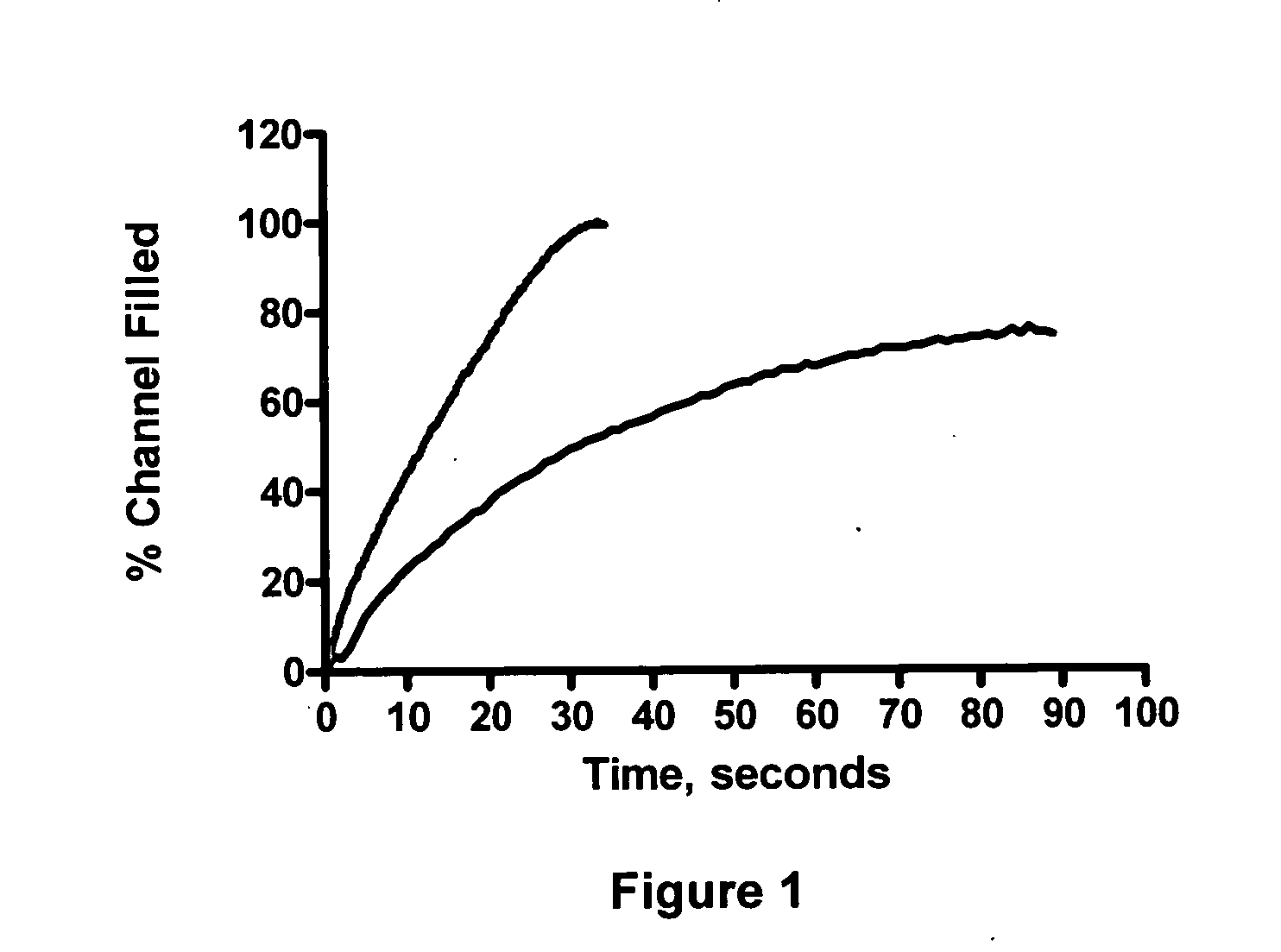Rough channel microfluidic devices
a microfluidic device and microfluidic technology, applied in the field of microfluidic devices in the rough channel, can solve the problems of undesirable fluid flow behavior, large amount of reagents and analytes used, and high cost of reagents, so as to achieve less susceptibleness and more predictable
- Summary
- Abstract
- Description
- Claims
- Application Information
AI Technical Summary
Benefits of technology
Problems solved by technology
Method used
Image
Examples
Embodiment Construction
[0009] As used herein the term “microfluidic” refers to devices having channels that have one dimension less than 1 mm in size, more particularly they have channels having one dimension in the range of 100 microns or less, and for the detection of viruses, they have channels having one dimension in the range of 10 microns or less.
[0010] The flow of a fluid through a microfluidic channel can be characterized by the Reynolds number, defined as Re=LVavgρ / μ (equation1), where L is the most relevant length scale, μ is the viscosity, ρ is the fluid density, and Vavg is the average velocity of the flow. For many microchannels, L is equal to 4A / P where A is the cross sectional area of the channel and P is the wetted perimeter of the channel. Due to the small dimensions of microchannels, the Re is usually much less than 100, often less than 1.0. In this Reynolds number regime, flow is completely laminar and no turbulence occurs. The transition to turbulent flow generally occurs in the range...
PUM
 Login to View More
Login to View More Abstract
Description
Claims
Application Information
 Login to View More
Login to View More - R&D
- Intellectual Property
- Life Sciences
- Materials
- Tech Scout
- Unparalleled Data Quality
- Higher Quality Content
- 60% Fewer Hallucinations
Browse by: Latest US Patents, China's latest patents, Technical Efficacy Thesaurus, Application Domain, Technology Topic, Popular Technical Reports.
© 2025 PatSnap. All rights reserved.Legal|Privacy policy|Modern Slavery Act Transparency Statement|Sitemap|About US| Contact US: help@patsnap.com

